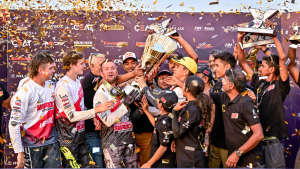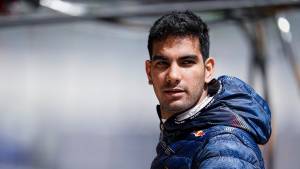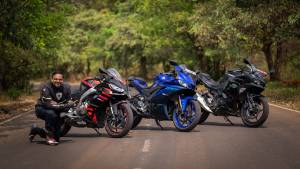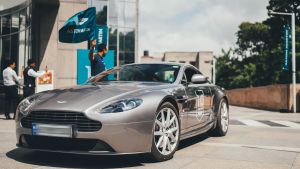The LG Sports story
Sundaram Karivardhan. It's hard not to think of him while at the Kari Motor Speedway the track built in his memory. It's an overcast day, and I'm standing on the bridge watching racecars go past the Formula FB02s (formerly the Formula BMWs) that are part of the JK Racing Championship. There are proper Formula cars racing in the country now, something that is heartening to see, and it's not just the FB02s that are around. There are also the FF1600s and F2000s that are raced in the National Racing Championship. Things, however, weren't always like this.
Back in the day, when racecars took to that hallowed old airfield called Sholavaram, Kari, as he was fondly called, not only raced there, but also encouraged fellow racers to get better, helping them in any way they needed. If there was a spare that someone required, he'd pull it out of his own racecar and happily hand it over to a fellow competitor. If a rival had trouble setting up his car, Kari would himself wield a spanner and ensure that the car ran fine and the racer in question could carry on unhindered. It was no surprise, then, that it was Kari who came up with the very first single seaters that were raced in India the Formula India Single Seater Maruti Engine, handily shortened to FISSME back in 1988.
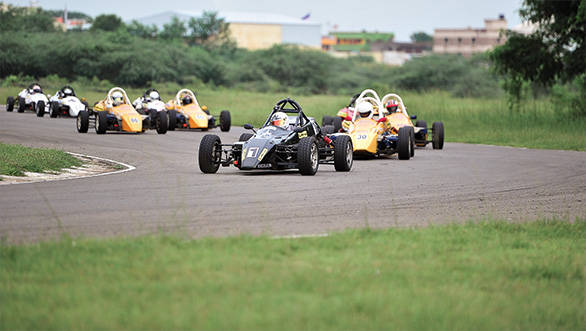 A decade later, the Swifts still race at the track
A decade later, the Swifts still race at the track
Then, the years went by Kari was gone, lost to the world in a tragic plane crash. The boys who had once raced the FISSMEs were now grown men, and it was time for the next generation of racers to step into the world of motorsport. One thing remained constant though those FISSMEs. They had been raced in India for the better part of two decades, and it was time for a change. It was B Vijayakumar, a regular face at the races, who took upon himself the onus of building the next set of single seaters that would dot the Indian motorsport scene for the coming decade. And it all happened in a tiny little facility in Coimbatore. A small pink building, that you'd very likely walk past without ever realising that within it was a team hard at work, drafting plans, assembling engines, welding chassis and building a fleet of racecars.
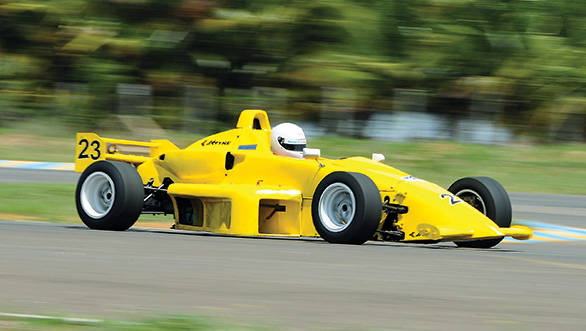 he Formula Rolons - essentially the first home grown 'wings and slicks' racers that a generation of Indian drivers got to try their hands on back in the day
he Formula Rolons - essentially the first home grown 'wings and slicks' racers that a generation of Indian drivers got to try their hands on back in the day
"I wanted to make a racecar that would be cheap to run, easy to maintain and also be hardy," says 'B Viji' as he's known to everyone in the motorsport fraternity. His thought process, as he explained to us, was simple. If someone wanted to compete in motorsport, the costs involved weren't the sort of sums you could find under the cushions of the family sofa. Given that the investment one had to make in motorsport was considerable, spending all that money only to later find out that you were claustrophobic, or didn't really like racing, or, quite simply, were rubbish at it, would be a colossal waste. In this situation it would be rather nice to have a low cost racecar that you could whet your appetite for speed on, before you decided whether or not you wanted it to be your bread and butter. Or indeed, if you wanted to spend your bread and butter on it.
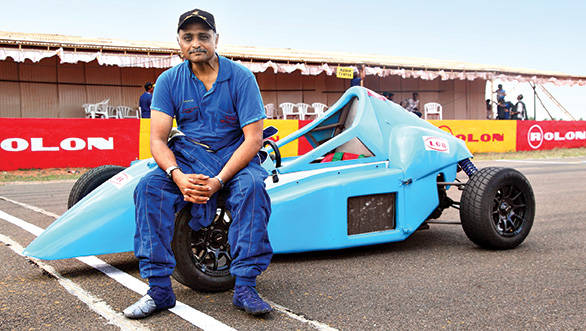 Vijayakumar with his latest creation - the Formula LGB4, which hasn't proved to be as popular as its predecessors
Vijayakumar with his latest creation - the Formula LGB4, which hasn't proved to be as popular as its predecessors
And so he began the process of drawing up plans for a racecar that would be suited to the Indian conditions. Given that the FISSME was already a tried and tested racer, B Viji decided it would make sense to pattern the car on the same model. Add to that the fact that it was Marutis that were the most popular cars at the time with the cheapest spares, it again made sense to stick with that very manufacturer for engines and spares too. So, after working away in the tiny Super Speeds facility in Coimbatore, just by the side of the Kari Motor Speedway, the Formula LGB was born a racecar that was powered initially by the 1.3-litre Esteem engine, and later by the 1.3-litre Swift engine. For B Viji, it was only the beginning.
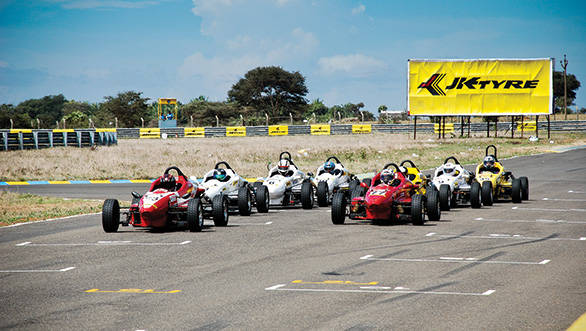 The Formula Hyundais that ran in an endurance format
The Formula Hyundais that ran in an endurance format
"The Formula LGB was an entry level racecar. But we needed something that people could graduate to once they had competed in or won this series," he declares. And so after the Formula LGB had already been raced between 2003 and 2005, there was more brewing in that small pink building. If our drivers were to have any hope of cutting it in the big league abroad, they would need to get behind the wheel of a proper wings and slicks racecar. The sort that would be powerful, light, strong and aerodynamically sound. Once again it was back to the drawing board for B Viji, and the car that emerged from the garage was a racecar in the true sense of the word. Between 2006 and 2009, it was this Formula Rolon Chevrolet, with a 1.6-litre Chevrolet engine powering it and a dogbox transmission, that would become the country's premier single-seater. There was a third single-seater that took to the grid in 2006, also designed and built by Viji himself, and that was the 1.5-litre-engined Formula LGB Hyundai first run as a regular racer, before it ran in an endurance format for two more years.
Now, the casual observer who might have found himself at the racetrack between the period of 2006 and 2009, when these single seaters were all being raced in the JK Tyre National Racing Championship, might have not understood the full import of what was happening. Sure, at other parts of the world there were single seaters that were engaged in wheel-to-wheel battles but nearly all of these were manufacturer backed. The extent of manufacturer involvement in the cars being raced in India back then, was restricted to engine supply. These single-seaters might not have been perfect, but for their time they were pretty darned good.
Then, there was also the fact that nowhere else in the world could one race a single seater for as little money as one could in India. The FISSME, towards the end of its stint in Indian motorsport, could be raced for Rs 10,000 a weekend, the Formula LGB (later called the Formula LGB Swift) could be raced for around Rs 30,000 a weekend, the Formula Hyundai could be raced for Rs 50,000 a race weekend, while the premier single-seater series, the Formula Rolon, could be raced at a cost of Rs 70,000 to Rs 1 lakh a weekend. B Viji certainly had accomplished his goal of making, in his own words, "the most inexpensive racecars in the world, entirely built in India."
Indeed, it was these inexpensive racecars on which the careers of several of India's top drivers today have been built. Says Akbar Ebrahim, a former racer himself and the head of Meco Motorsport, "The Rolon was definitely a good entry-level racecar that had a proper five-speed racing gearbox that helped our racers before they took to racing abroad." Aditya Patel, now an international touring car driver with the Audi team graduated through these very ranks, winning the Formula Rolon championship in 2007. "The Rolons were proper wings and slicks racecars, that were good to drive," says Patel. "It prepared me for international Formula cars quite well, considering the cost it was built at," he declares. He wasn't the only one - Armaan Ebrahim, Ashwin Sundar, Rayomand Banajee and several others graduated through these very rungs of motorsport.
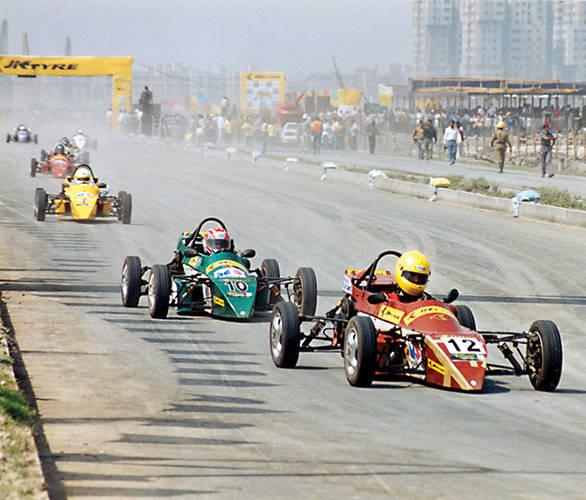 The FISSMEs that were the first home-grown single-seaters raced in India
The FISSMEs that were the first home-grown single-seaters raced in India
But why did B Viji go out of his way to build these reasonably priced racecars, though? There's no way to explain it other than that word so often used when it comes to enthusiasts of all things motor racing - passion. As an automotive enthusiast, who remembers being entrusted with the task of readying the family's 1927 Ford Model T for a car show at the tender age of 12, and attending the races that would happen at Sulur airfields in the mid Sixties, there was simply no escaping motor racing. The fact that he didn't have a background in engineering on his side, however, didn't deter him at all. Years of tinkering with cars while he himself was racing, and years of working alongside Kari and other motorsport enthusiasts from Coimbatore, had prepared him well. And while technology started changing rapidly in the world of motorsport, B Viji had a trick up his sleeve. "I would take shortcuts!" he says with a smile. "Every two years or so, there would be at a motorsport fair in some part of the world. All you needed to do was stroll through one to keep abreast with the latest technology in the sport."
Once again, the years have gone by. Now, the Formula Swifts run in the MMSC FMSCI National Racing Championship, alongside their successors, the Formula LGB4s. The LGB4s themselves are a part of the JK Tyre Racing Championship, although they aren't quite so quick or driver friendly as their predecessors. The Formula Hyundais have long been destroyed, and the Formula Rolons have fallen out of use after their engines were changed for the 2009 season and they didn't seem to regain their old turn of speed. There are other racecars dominate the National Championship today racecars that are probably faster and built more solidly and have taken the game to the next level. Which is as it should be.
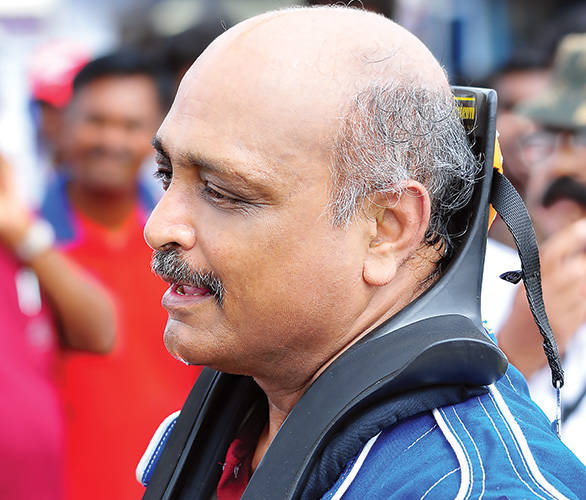 LG Sports' B Vijayakumar, the brains behind the single-seaters that raced in India for a decade or so
LG Sports' B Vijayakumar, the brains behind the single-seaters that raced in India for a decade or so
"They gave a whole generation of racers an opportunity to race," says Rayomand Banajee, multiple national karting champion and national racing champion. It's a statement as succinct as it is true. And that's what it's all about really. For those few years, when there was simply no other way to get your hands on single seaters, the tracks at India saw close battles and exciting racing in three different types of racecars. And they were all dreamt up by one man and built in a that tiny facility at the Kari Motor Speedway.
